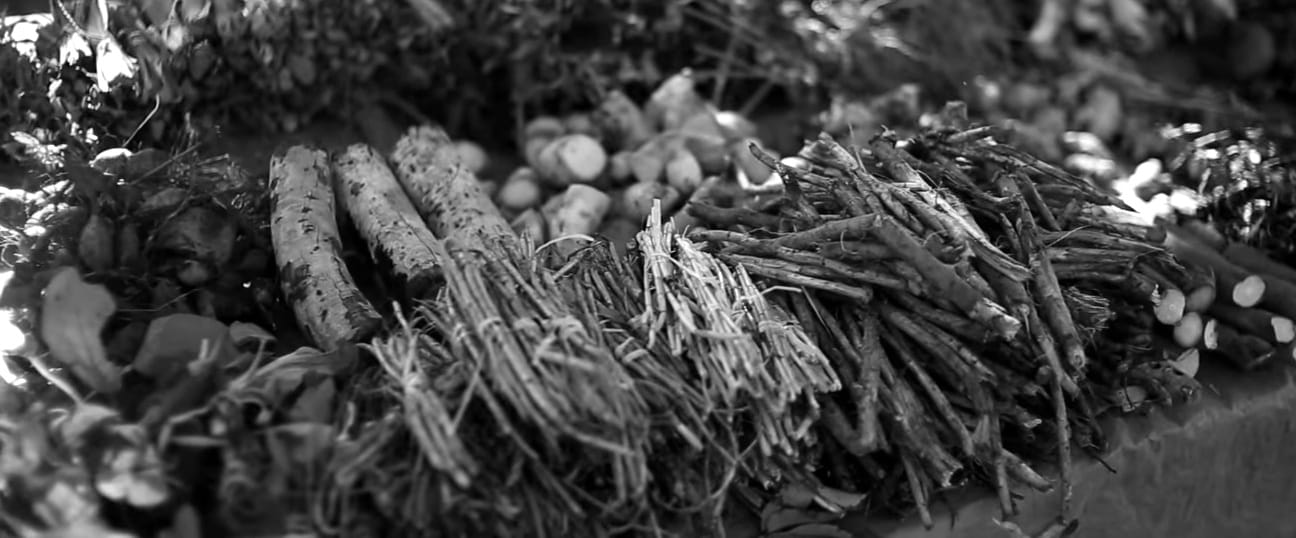Explore Makemake and the incredible competition that took place on Rapa Nui to choose the Tangata Manu or Easter Island birdman whose clan would rule the island during one year. Discover Myths and Legends of the birdman cult on the Easter Island – Rapa Nui
In this Article
God Makemake was the creator of all things and embodied the fertilizing force of nature. Few traces of the cult remain, with the exception of the birdman ceremony. Basic motifs on petroglyphs and on Moai 🗿, like frigate birds, sooty terns, vulva forms, big-eyed faces and ceremonial paddles and the rongorongo tablets tell about its history, myth and folklore.
Rapa Nui offers a world of inquiry that have remained unanswered for centuries. Questions abound surrounding the origins of the people and their culture, the Moai statues, the Tangata manu – Birdman cult and the history of the Islands racial extermination, ecological and natural disasters.
“There exists in the midst of the great ocean, in a region where nobody goes, a mysterious and isolated island,”
wrote the 19th-century French seafarer and artist Pierre Loti.
ETYMOLOGY: Easter Islands – Isla Pascua
Isla Pascua or Easter Island lies in the middle of the Pacific Ocean, 2200 km from its closest inhabited neighbor, and a five-hour flight from Santiago de Chile.
Known in ancient times as Tepito Te Henúa, meaning “navel of the world” – it may also mean The End of the World.
Today, the land, people and language are all referred to locally as Rapa Nui, meaning “large island”.
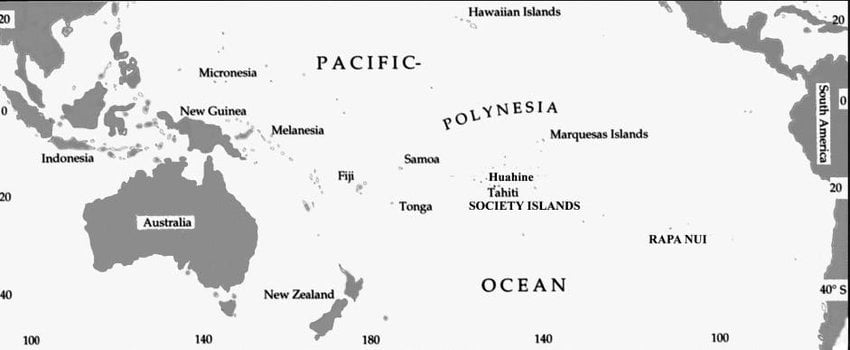
Dr. Couteaud has written in: the “Revue de L’Ecole D’Anthropologie de Paris” for March, 1910, that the name Rapa-nui is not known to the Easter Islanders – that it was given by the Chilean slavers to distinguish this island from the other Island Rapa-iti [or Oparo, an island situated in 27° 30′ South Latitude, and 144° Long].
Upon arriving at this UNESCO World Heritage Site far off Chile’s coast, we are welcomed by sunshine, smiling faces, and flower chains. On the way to the only town – Hanga Roa an islander gives us a free ride, she quickly creates space in the car, so that everyone, including our bags, her baby and a plateau of empanadas fit in. The lovely lady would give is a ride to the only camping of the Island, where we would put our tend.
The friendliness of the people is impressive and daily we discover the fascination of this island, enjoying in full a very special place.
That first day, we ran also into a somehow exotic island man with feathers on his gray haired head, big holes in the long earlobes and covered in tattoos. Smoking, drinking and joking, he knew various myths and legends of the birdman cult on the Easter Island. There was a lot of laughing and discussing going on, and as outsiders we did not get the impression that the culture and traditions are treated, on the contrary. The people of the island sem to form a tied community who visibly enjoyed celebrating. There was a football gathering going on with guests from all over Chile, belonging to ethnic minorities.
We would meet Makemake again, welcomed in his home and listening to more myths and legends of Rapa Nui.
“Soi Makemake y tengo un nombre importante.”
“My name is Makemake, it is an important name- Makemake is the name of our great god”,
and before we can ask he tells us about his Island and his people.
Myths and Legends of the birdman cult on the Easter Island – Rapa Nui
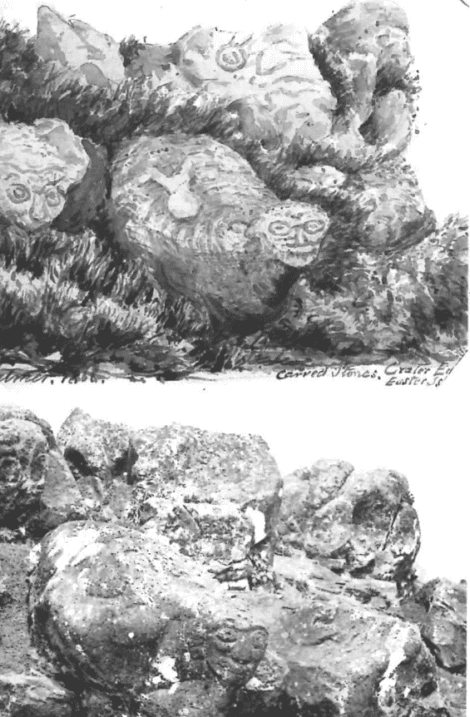
Easter Island myths and legends have been transmitted orally by the island people and collected by ancient visitants. But these myths, that try to explain past events, are usually adorned by the imagination of the teller or the listener. Therefore, the historical reconstruction based on them wanders between reality and fantasy.
Also the “knowledge” about the birdman cult comes from early visitors to Easter Island, most notably Katherine Routledge in 1914-1918, as well as information obtained from archaeological study of the ceremonial village of Orongo itself. We also have expedition records from the late 19th and early 20th centuries, of which arguably the most important comes from the 1868 visit by surgeon John Linton Palmer. Palmer was much fascinated by Mata Ngarahu; he wrote:
At the end of this settlement…almost all the blocks of lava are more or less sculptured;
but as they are weather worn, and the material perishable and overgrown, it is difficult to make out the design – so much that I made a colored sketch… without perceiving at the time that the one represented a face, which quite startled me on looking at my work.
I wish I could have spent some hours, nay, the whole night, up there, working away with niy pencil; but at 2.30 was the last boat, and so duty called me away from a most interesting place.
Although Katherine Routledge suggested some of the faces were portraits of certain individuals, Ferdon described them as being of the god Makemake. Locals on the island suggested also, that the faces were an emblem of the Miru tribe (the status group in ancient times).
TANGATA MANU – THE CULT OF THE BIRDMAN
MYTH: Makemake and Hua bring birds to Rapanui

[dropcap style=”no-background”] B [/dropcap]efore human settlement, the sea-and shore bird population of Easter Island must have been large and unrestricted in nesting habitats. Increasing exploitation, particularly of eggs, is described in a myth that involves the intervention of Makemake and Haua.
The two gods and a priestess drove the birds to a place called Kauhanga, but the people continued to hunt them.
After three years Makemake and Haua, deciding it was time to protect the birds, chased them to Vaiatare, a waterhole on the east rim of Ranu Kau crater.
Another three years passed and the bird population continued to dwindle because of the egg-gatherers, so Makemake and Haua drove them to uninhabited Motu Nui.
Makemake and the Haua brought the first birds to Easter Island and introduced the rites of worship concerning them. The eggs of sooty birds were one of foremost food resources on Easter Island in the distant past. It is conceivable that the bird cult regulated indeed the rules of gathering eggs on Motu-Nui and of their distribution among the natives, as required by the social norms.
The importance of the sea- and shore birds – Manutara
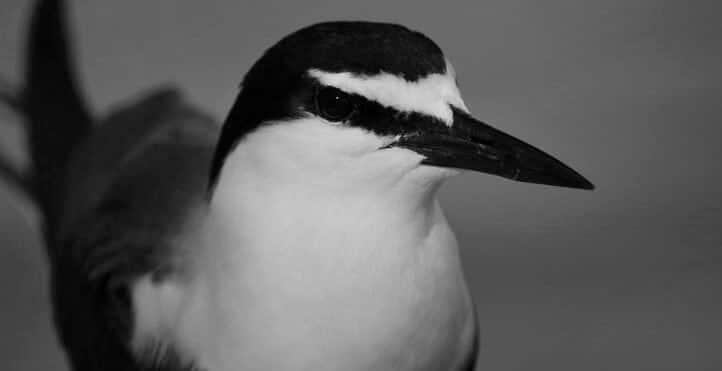
The importance of birds in the culture of Easter Island is manifested through the numerous allusions found in engravings, paintings, sculptures and mythology throughout its history. Makemake, was considered to be embodied in the egg of the manutara, the ‘sooty tern’ and in petroglyphs of an anthropomorphic figure representing a tangata manu – the birdman.
Gradually the bird- and birdman cult must have took on religious and social significance. There was a belief that birds had a mystical relationship with the gods, and especially, the sea- and shore birds that united the earth, the sea and the sky.
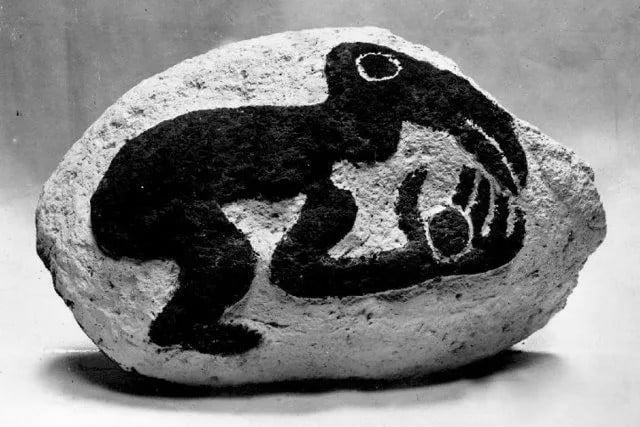
The egg was special because it contained magical power or mana upon obtaining it the birdman became a sacred person who was considered an incarnation of Makemake.
~ William Mulloy
Some researchers believe, the birds became considered as a connection between the world of the living and the world of the spirits. They were the messengers of the spirits, of the ancestors and of the gods. In the latter case, an avatar of the god Rongo, also called Makemake, became the principal divinity associated with this cult.
The Rapanui had to decipher the messages brought by these winged creatures from the spiritual world. For that reason, the Manutara (sooty tern) was given a preponderant position among all the migratory birds.
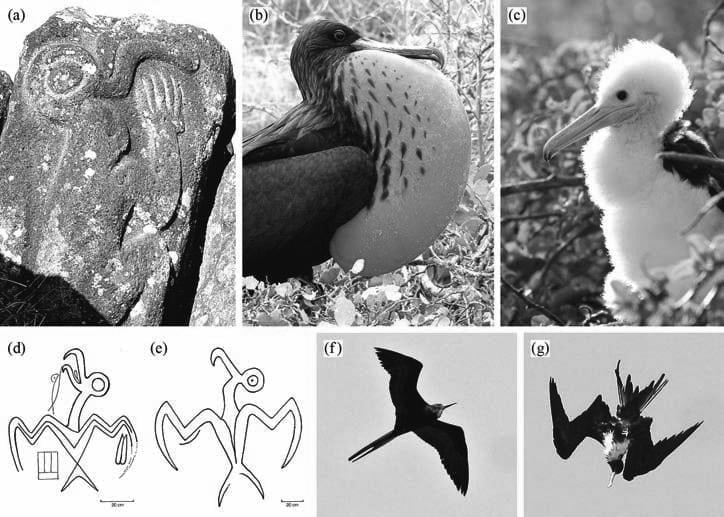
Iconographic analysis of birdman carvings:
a) classical birdman from Mata Ngarau
b) frigate bird with inflated gular pouch
c) juvenile frigate bird
Frigate bird in rock art (drawings by G. Lee):
d) from Motu Nui cave;
e) at exterior quarries of Rano Raraku.
Typical silhouette of frigate bird (photos courtesy of S. Ryan):
f) normal flight;
g) diving stance.
With its arrival around the spring equinox, the message of the Manutara was clear: the end of winter, the end of cold, the end of scarcity … the beginning of abundance, of fertility, of the good times.
Visiting Ranu Kau and Orongo – Where the birdman ritual took place

We walk by to Rano Kau, the largest volcano on the island, whose enormous crater is now filled with water. Totora reeds thrive in the lake on the crater ground, the gentle pattern and the greenish-yellow shades of the crater landscape are unique, and sun rays constantly generate a new color spectrum.
Walking around the crater and approaching the sea we enjoyed a view of the three islands, where the birdman ritual once took place.
On the three Motu- Islands:
Kao Kao (“sharp island”),
Iti (“small island”) and
Nui (“large island”)
a great variety of marine birds arrived to nest every spring, of which only a few can be observed at present.
Stunning – We are looking down the almost vertical cliff of 300 meters to reach the shore and imagining how competitors could climb down and up the crater rim, and swim in shark-infested waters with a raw egg tied to their foreheads.
The birdman competition was held in spring [August- September] with the arrival of migratory birds, the tern or Manu Tara, that nested on the offshore Motu island.
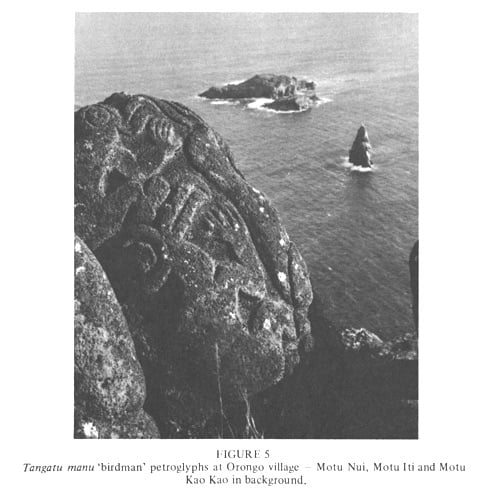
The ceremony used to gather all the islanders together in Orongo, in an awe-inspiring setting beside the volcanic crater of Rano Kau, on a narrow ridge between a 300 meter or 1000 foot drop into the ocean on one side and a deep crater on the other.
Each clan would bring its own candidate, for the competition, known as hopu. Competitors would then have to descend Rano Kau’s sheer rock-face and swim to Motu Nui, the largest of all the islets.
There they would await the birds’ arrival- some cases it took weeks until the first egg was laid.
The winner would announce his find from a rocky outcrop, and, from that moment to the following spring, the chief of the proxy’s clan, hopu, would become the tangata manu, the Birdman.
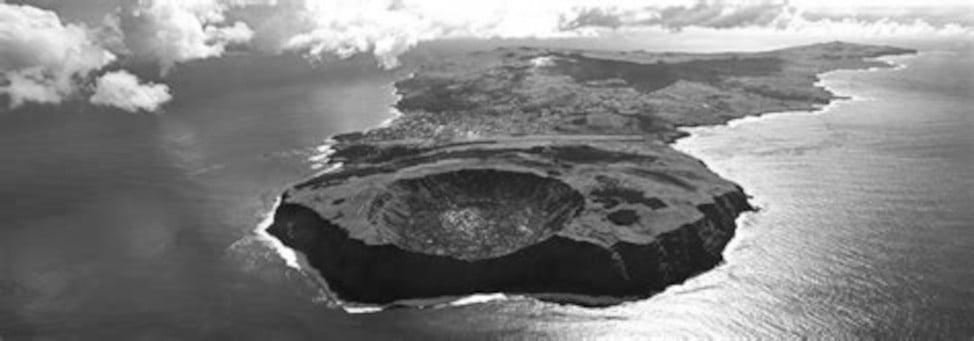
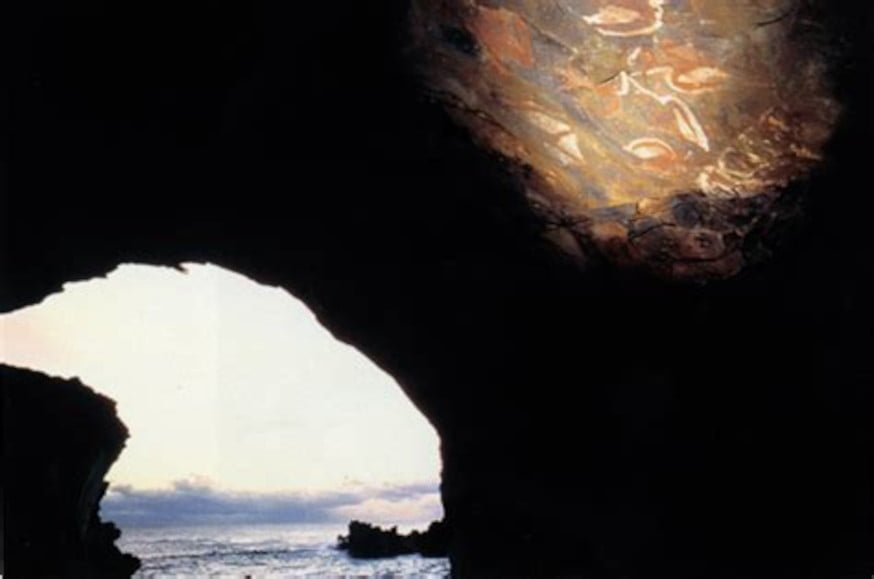
Ranu Kau
At the foot of the Rano Kau volcano, the chiefs of the most important clans accompanied by their families resided in large communal boat-houses. During the months that they passed there, celebrations with feasts and dances were organized, during which, according to tradition, several victims of the rival clans were sacrificed and eaten, it seems in the cave of Ana Kai Tangata.
Orongo

Orongo village and identification of the house Nr 5, seen by Geiseler.
b) kite aerial photograph of south extremity of ‘Orongo village with the corresponding places marked (photo courtesy of Don and Elaine Dvorak).
The numbers denote: 1) a peak at the entrance to Karikari; 2) a rock cluster corresponding to locus #1; 3) carved stones of Mata Ngarau; 4) House #39 and 5) barrow pit houses #33 and #34.
The birdman cult used to be practiced here, perched on the 350-m-high rim of the Rano Kau crater. At the lip at the far side of the crater, high above the sea are the ruins of Orongo. It used to be a sacred place also because tradition has it that King Hotu Matu’a went up there to invoke the spirits of his ancestors shortly before his death. According to Rapa Nui mythology Hotu Matu’a was the legendary first settler and ariki mau (“supreme chief” or “king”) of Easter Island. Hotu Matu’a and his two canoe (or one double hulled canoe) colonising party were Polynesians from the now unknown land of Hiva. They landed at Anakena beach and his people spread out across the island, sub-divided it between clans claiming descent from his sons, and lived for more than a thousand years in their isolated island home at the southeastern tip of the Polynesian Triangle until the arrival of Dutch captain Jacob Roggeveen, who arrived at the island in 1722.
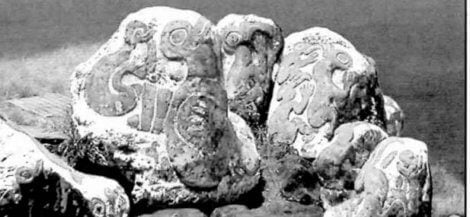
Around 54 houses in the ceremonial village were constructed with basalt slates taken from Rano Kau. Even though the first constructions had been built prior to the birdman cult, it was during this period that the village likely achieved its greatest splendor. The houses were solid structures, and some of the interior walls were more striking than others owing to graphic depictions of the birdman ceremony, as well as of European ships.
Almost all the houses were plundered and destroyed, but they have since been rebuilt in order to restore them to their original, only a glimpse of the ancient beauty remains.
Mata Ngarahu
The ceremonial heart of Orongo is the sacred precinct of Mata Ngarahu, constructed over a natural basalt outcrop. Different rock drawings associated with the bird cult were engraved and painted here and Motu-Nui. Among the basic motifs of these petroglyphs were
- frigate birds,
- sooty terns,
- vulva forms,
- big-eyed faces and
- ceremonial paddles, connected to the birdman, Makemake and Hua or Hina.
Moai- Hoa Haka Na La, “the stolen friend”

At some point in history, which some studies place at the end of the 18th century, the cult of deified ancestors, represented by the moai statues, is abandoned due to a loss of prestige of the old political and religious order.
An excellent example of this transition between old [ Hotu Matu’a] and new beliefs [Makemake and the birdman cult] is the moai Hoa Hakananaia or Hoa Haka Na La “the stolen friend”.
The moai was sculpted in basalt, and because the engravings on its back symbolize “the ancient culture’s continuity and change”.
In 1868, it was taken to London aboard the English Man of War, HMS Topaz. It has since been exhibited at the British Museum.
On the back of the ancient idol there are reliefs that express the birdman cult.
A-F showing birdman motiv– Tangata [hatu] manu
G-I showing Komari (vulva forms) constitute the most prevalent image in the island’s rock art: 564 have been documented and it is likely that this number is lower than the original number.
Many small beach cobbles or small boulders that were covered with this motif were removed from the island and now reside in museums around the world. The sizes of komari vary enormously as do the techniques.
In many instances at ‘Orongo, komari are superimposed onto images of birdman.
Sages or Priests
The priests or people endowed with plenty of mana governed the spiritual world of the Rapanui.
Makemake
“gave his orders to mortals through the priests and priestesses”.
The priests were appointed by the ariki (King) from among the noble, miru tribe.
Bienvenido de Estella holds, that the priests lived separately from the rest of the population, probably in Orongo. In a home where children also lived who would be instructed in prayer, song and dance.
The rongorongo tablets
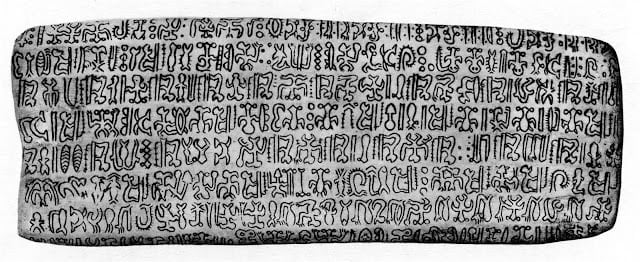
[dropcap style=”no-background”] A [/dropcap]ccording to local legend, the first king, Hotu-Matua, possessed the knowledge of this language, and brought with him 67 tablets containing lists, folk stories, records of ancestors, and accounts relating to the lands from where they had migrated. Knowledge of rongorongo was restricted to the chiefs, the sons of those chiefs, and certain priests or teachers. When the rongorongo were chanted aloud in front of the Ariki (great chief). If a mistake was made when chanting, the tablet was confiscated from the pupil, who would be led away by the ear.
Only 25 tablets and artifacts of the rongorongo inscriptions exist since many were destroyed through war and fire. They are now scattered around the world’s museums and archives, and nearly 150 years since their discovery researchers try to decipher them.
~ Martyn Harris

Priests, called “ivi atua“, prophesied who would be chosen and designated the young servants of the leaders, who would be the hopu and compete at the birdman ceremony on behalf of their clan. Makemake, would intervene in designating the ‘servant’ who would find the egg.
This sages would recite the tablets and sing throughout the day invoking god Makemake and Haua.
The recited formulae including such words:
Hatu o te manu kia Haua, kiakia Makemake. Ka too ma Haua, ma Makemake.
„The fruits (eggs metaphorically) of birds (came) to Haua, to Makemake.
Take for Haua, for Makemake.‟
The Hopu Manu
The selected servants would occupy the caves on Motu Nui while awaiting the arrival of the sooty tern.
Provisions and cooked food prepared by people at Orongo were carried on reed floats across the 2 kilometers between the main island and the motu. It is said that the hopu dried banana and sweet potato skins in the event that stormy weather prevented the continued transport of food supplies.
While Tangata manu festivities were taking place at Orongo, the hopu on Motu Nui recited prayers or incantations to ensure their success in finding the first egg. The names of eight deities would be chanted by the contestants during the various rituals.
- Makemake and the other three deities associated with the cult were
- Hawa-tuu-take-take (the Chief of the eggs, a male god),
- his wife Hoa, and
- another female deity named Vie Kanatea.
Each of these four also had a servant god who was associated with them.
Once the first egg had been found, the hopu climbed on to a rocky prominence called Rangi te Manu or Puku Rangi Manu, where he shouted to a man in a cave (Haka rongo manu ‘listening for the birds’) below Orongo, who then relayed the message to the victor.
Rules of the cult demanded that the lucky hopu bring the egg back with him and present it to his chief, that received the title of tangata manu ‘birdman’.
Glyph 44 Ta(h)a reads „The Frigate Bird.‟ It is the description of the paramount sun god Tiki- Makemake and of a bird-man who wore such a mask. Glyph 3c Hina conveys the name of his wife. Old Rapanui hua means „egg‟. One can read the expression 25 14 hua Haua „the egg of (the moon goddess) Haua‟. It was the message concerning the first egg of the sooty tern.
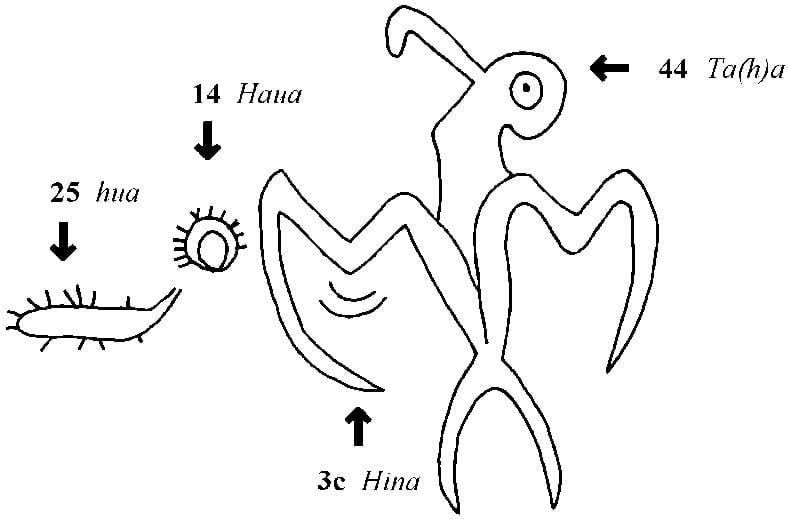
MYTH: Tangata hatu manu
[dropcap style=”no-background”] E [/dropcap]very tribe sent a man (or two men) in order to come to the islet of Motu-Nui to expect the first egg that the sooty tern laid.
In the month Hora-Iti (August chiefly), (they) came to the islet (of Motu-Nui) to expect (the first egg).
If (the member) of the Tupa-Hotu tribe disclosed the egg, the authority belonged to the Tupa-Hotu.
Having found the egg, the man cried toward Orongo to the man (who was) at Orongo (and)
who would be the owner of the bird: “Shave the head!”
(So,) (he) shaved his hair, eyebrows, eyelids (and) beard.
The man from the islet came swiftly with the egg holding a container, (he) gave (it) to the (elected) man, (who became) the master of birds.
The man, (who became) the master of birds, took (the egg), (he) held (the egg) on the palm, (then he) danced, (then he) was sad, (he) shouted in the honour of the dead father (and) mother, of the dead brothers (and) sisters, of the other dead forefathers; (he) cried in the honour of those ancestors who could not see the egg (tou) of the bird; (it was) the reason of the shouting.
As a result, the authority belonged to the Tupa-Hotu tribe.
~ Sergei V. Rjabchikov and Englert.
THE BIRDMAN LIVES IN SECLUSION FOR A YEAR
Birdman or tangata manu means ‘learned man of the sacred bird’- following his designation as the new birdman, the chief of the hopu would shave his hair off and paint his head red.
The birdman’s arm that touched the egg was decorated with a strand of a red tape and a piece of sandalwood. Red was sacred – the color of life, and associated with sacred power (mana) and the god Makemake.
The birdman, then danced and sang his way from Orongo to his new residence at the quarries of Rano Raraku or in the former royal residence at Anakena, where he lived, in seclusion, in a grass-thatched house shaped like an overturned boot [some say he lived in a cave] Spending his days sitting and serving as a kind of oracle to visitors who brought him food, and abstained from bathing or cutting his fingernails and hair.
HIS CLAN RULES THE ISLAND
Meanwhile, his tribe enjoyed pan-island power – which was often abused by tribe members who plundered the fields of rival clans.
It was the birdman’s family who would reap the rewards of his victory through a series of privileges and honors. His clan would acquire a higher social status, allowing them better access to the island’s natural resources and the capacity to have a greater degree of control over the factitious clan groups who continued to fight for authority on the island.
Métraux writes that this chief’s lineage was the recipient of
“certain material advantages and vast moral and religious benefits”.
Although there is scant information regarding the rituals themselves, it is understood that the group would enjoy Makemake’s patronage via the new chief. Oral tradition attributes considerable abuses of power to this period, whereby defeated clans would often be forced to hide in caves for fear of punishment.
Though in theory each group had the chance to this privilege, politics and power played an important role: not every tribe was actually allowed to take part in the competition.
A second organized search for eggs on Motu Nui
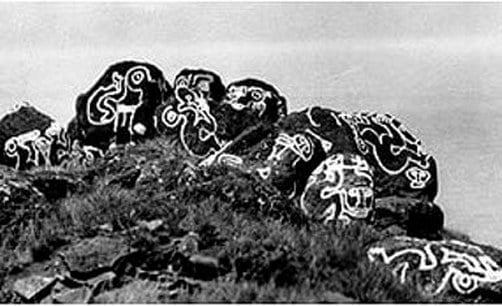
According to Routledge, who interviewed the last surviving participant in the cult ceremonies at Orongo, and also obtained the most factual information on the bird cult, there was a second organized search for eggs on the island of Motu Nui each year.
This later event was the exclusive privilege of powerful matatoa ‘warriors’, known collectively as ao, who took up residence at the village of Mataveri, located on the lower, north-western slopes of Rano Kau. The ao went to Motu Nui to collect eggs and also young sooty terns, called piu.
Routledge described the sequence of events that followed:
It was not until the “piu” had been obtained that it was permissible to eat the egg, the period of commencement being known as “toro”, and they were then consumed by the Mata-kio only, not by the Mata-toa; the first two or three eggs, it was explained, were given to god, to eat them would prove fatal.
Some of the young manu-tara were kept in confinement till they were full grown, when a piece of red kapa was tied around the wing and leg and they were told “Kaho ti te hiva,” “Go to the world outside;” there was no objection to eating the young birds.
Allocation of the first eggs to a god suggests that this was a first-fruits ceremony. The reasoning behind the gift of eggs to matakio ‘defeated warriors’ by matatoa ‘warriors’ is unclear.
Collection of eggs from Motu Nui became formalized in the annual manu tara cult ceremony:
According to Geiseler, who collected the myth in 1882, all sea-and shore birds were tapu except for the three-month period between July and September. Commencement of bird exploitation was formalized in the ritualized search for the first egg of the migratory sooty tern that arrived during this part of the year.
The decline of the Birdman cult
Katherine Routledge was, able to collect the names of 86 tangata-manu. The last registered tangata manu was called Rokunga, who would have been the winner in the year 1866 or 1867.
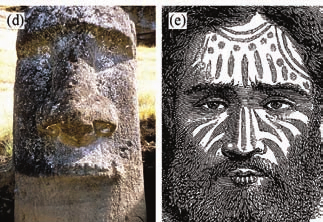
d) Moai RR-045 with hatched lips excavated by the Norwegian Archaeological Expedition (image courtesy of the Kon-Tiki Museum) and
e) portrait of Easter Islander with tattooed lips (etching made after drawing by Pierre Loti, from L’illustration 1872).
With him, the old era definitively ended, when the external influences had already caused a tremendous impact on the population, social order and culture.

This competition continued annually until the 1860s, with historians believing it to have been stifled by the Christian missionaries who settled on the island in that period of time.
Other events, such as the kidnapping of thousands of islanders by the Peruvians to work as slaves in the mines and guano- islands, and the smallpox epidemic that left the population in 1877 at a mere 110 people, has also played a part in the decline of this religion and the importance of the birdman cult.
NOTE: Ethnographic information on the details of the manutara ‘sooty tern’ cult and the feast of the tangata manu ‘birdman’ is contradictory.
Myths and Legends of the birdman cult on the Easter Island- Rapa Nui are plentiful, this is just a small part of it.
The birdman in art
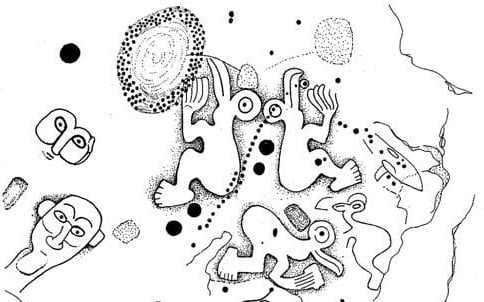
The birdman cult was associated with the development of a particular artistic style, focused on
- a stylized depiction of the tangata manu (a human figure shown in profile with a bird head),
- eye-masks and faces of Makemake, as well as
- stylized drawings of manutara birds.
These motifs can be found in great numbers at the ceremonial village of Orongo, and Motu Nui, either in carved or painted form.
Easter Island artists created a diversity of other art forms. Working wood and stone as well as more delicate materials such as feathers, reeds, and barkcloth, artists produced highly refined objects.
The manupiri stone as drawn by Paymaster. The original figure caption Department of Anthropology, University of Arizona says: “Walled-in stone relief representing the chief divinity, Make-make, in relief sculpture, inside a stone house on Rano Kau.
Cambridge: Belknap Press of Harvard University Press.
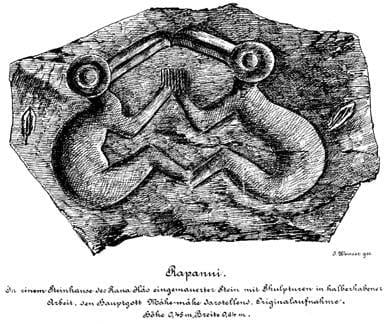
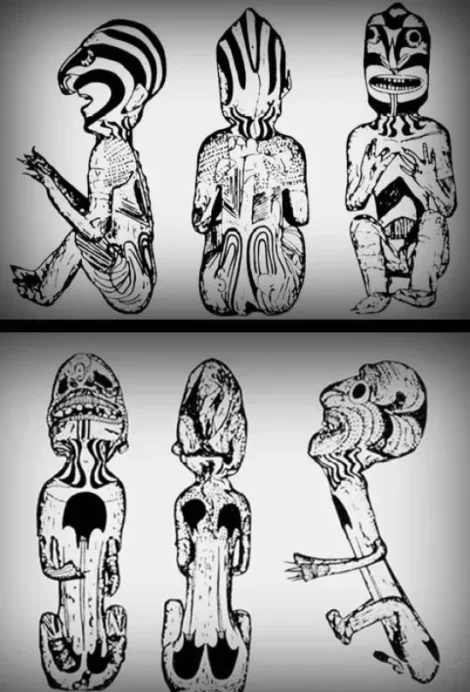
Barkcloth figures from Rapa Nui are rare.
One of these is a humanoid figure that unlike many other Polynesian sculptural forms (tikis), is seated with its knees bent in front of the body and arms lifted.
This figure’s features are from humans and animals. A large nose which could also represent a hooked beak. Its hands resemble claws which may allude to the theme of a Birdman cult.
It is made of a wooden frame around which the barkcloth was wrapped. Paint was used for the tattooing detail.
Tattoos depicted on the neck are said to represent tattoos typical of Rapa Nui. The use of barkcloth is significant because it was a very rare item on Rapa Nui.
The spirit of the Myths and Legends of the birdman cult on the Easter Island- Rapa Nui is still very present in Easter Island.
The memory of this original ceremony can be felt during Koro Nui Tupuna, a November tournament in which the students of the local schools have to show their skills in various physical and cultural tests.

Members of the Rapa Nui delegation perform during the opening ceremony of the 12th Festival of Pacific Arts at the Paseo Stadium in Hagåtña May 22. Matt Weiss/Post

Every February, several of the cultural and sports events during the Tapati Rapa Nui Festival, are inspired by the strength and bravery of the ancient hopu manu.
Admired by early-20th century European artists and intellectuals, birdman and other figures from Easter Island became an important influence on the Surrealists.
Particularly Max Ernst works often include birdmen inspired by Easter Island imagery. (Max Ernst, photograph by Yousuf Karsh, 1965.)
~ ○ ~
Keep exploring:
Works Cited & Multimedia Sources
- https://islandheritage.org/wp-content/uploads/2012/11/RNJ_26_1_Horley_Lee.pdf
- Barkcloth Figure & Male Figure. 2017. http://mappingoceania.org/polynesia/barkcloth-figure-male-figure/
- Barkcloth figure. Photograph. Photograph from Peabody Museum of Archeology and Ethnography. https://www.peabody.harvard.edu/node/2064
- Barthel Thomas S. The Eighth Land: The Polynesian Settlement of Easter Island. 1978. http://archive.hokulea.com/ike/moolelo/hotu_matua.html
- Boyd Films Laura Jean. Mythologizing the History of Easter Island Through Documentary. In: Rapa Nui Journal Vol. 21. 2010. http://islandheritage.org/wordpress/wp-content/uploads/2010/06/RNJ_21_1_Boyd.pdf
- Buck Peter H. Vikings of the Pacific. University of Chicago Press. 1938. http://archive.hokulea.com/holokai/geography/1999_islands/rapanui.html
- Chauvet Stéphen. Easter Island and Its Mysteries. Translated by Ann M. Altman, edit. Shawn McLaughlin. First published in 1935. http://www.chauvet-translation.com/carved.htm
- Christine Gleisner, Sara Montt (Unidad de Cultura, Fucoa) rapanui serie introducción histórica y relatos de los pueblos originarios de chile historical overview and tales of the indigenous peoples of chile. https://www.fucoa.cl/publicaciones/pueblos_originarios/rapanui.pdf
- Craig Robert D. Handbook of Polynesian Mythology. 2004.
- Easter Island or (Man-) Eaters Island? Pau/G. Bahn. Vol II (3) September 1997 http://islandheritage.org/wordpress/wp-content/uploads/2010/06/RNJ_11_3_Bahn.pdf
- Englert, S. Tradiciones de la Isla de Pascua en idioma rapanui y castellano. Padre Las Casas: Printing San Francisco. 1939.
- Expedition of the seven explorers. http://chileprecolombino.cl/en/arte/narraciones-indigenas/rapa-nui/expedicion-de-los-siete-exploradores/
- expedition of the seven explorers. http://chileprecolombino.cl/en/arte/narraciones-indigenas/rapa-nui/expedicion-de-los-siete-exploradores/
- Hell Heinz. Mysterious Easter Island Described by a Passenger on Once-a-Year Steamship New York Herald Tribune, 1933. In: Rapa Nui Journal 58 Vol. 22. 2008. http://islandheritage.org/wordpress/wp-content/uploads/2010/06/RNJ_22_1_Heinz_Hell.pdf
- History of Easter Island. Rapa Nui mythology. From Wikipedia, the free encyclopedia. https://en.wikipedia.org/wiki/History_of_Easter_Island#The_%22statue-toppling%22
- Hjva Rapanui Ancient Song and Dance of Easter Island Steven Roger Fj cher, Ph.D. Auckland, New Zealand. Vol II (4) December 1997. http://islandheritage.org/wordpress/wp-content/uploads/2010/06/RNJ_11_4_Moai.pdf
- https://en.wikipedia.org/wiki/Rapa_Nui_mythology
- Lee Georgia, Ika Keremo. Petroglyphs and Legends of Rapa Nui. Vol. 13 (3) September 1999. http://islandheritage.org/wordpress/wp-content/uploads/2010/06/RNJ_13_4_Lee_Ika.pdf
- Legends and mythology. https://www.easterisland.travel/easter-island-facts-and-info/legends-and-mythology/
- Luomala Katharine. Moving and movable images in Easter Island custom and myth. The Journal of Polynesian Society. Volume 82. 1973. http://www.jps.auckland.ac.nz/document/Volume_82_1973/Volume_82%2C_No._1/Moving_and_movable_images_in_Easter_Island_custom_and_myth%2C_by_Katharine_Luomala%2C_p_28-46/p1?page=0&action=searchresult&target=
- Mc Coyby Patrick C. The place of near-shore islets in Easter Island prehistory. The Journal of Polynesian Society. Volume 87.1978. http://www.jps.auckland.ac.nz/document/Volume_87_1978/Volume_87%2C_No._3/The_place_of_near-shore_islets_in_Easter_Island_prehistory%2C_by_Patrick_C._McCoy%2C_p_193-214/p1?page=0&action=searchresult&target=#
- Moai statues. https://www.easterisland.travel/easter-island-facts-and-info/moai-statues/
- More Journals on Easter Island: The works or Johann Reinhold Forster (171.9-1798) and Johann George Adam Forster (1754-1794) [ Herbert von Saber. Vol 6, No 2· Page 34.] Rapa_Nui_Journal_6_2_June_1992.pdf
- Mulloy Ross Emily. The Long and Short ofit: Some Thoughts on the Meaning of the Names hanau eepe and hanau momoko in Rapanui Tradition. Laramie, Wyoming. Vol 7 (4) December 1993. https://web.archive.org/web/20140923212411/http://islandheritage.org/wordpress/wp-content/uploads/2010/06/Rapa_Nui_Journal_7_4_December_1993.pdf
- Mulloy William. Contemplate The Navel of the World, originally appeared in Americas VoL 26:4 1974. Rapa_Nui_Journal_5_2_Summer_1991.pdf
- Rapa Nui Journal. Vo 16 No2. 1992. Rapa_Nui_Journal_6_2_June_1992.pdf
- Routledge Katherine Pease. The mystery of Easter island; the story of an expedition. 1919. https://archive.org/details/mysteryofeaster00rout
- The Birdman Motif of Easter Island. http://www.bradshawfoundation.com/easter/birdman_motif_easter_island.php
- The Birdman Motif of Easter Island. http://www.bradshawfoundation.com/easter/birdman_motif_easter_island.php
- The Sooty Tern and its Role in Easter Island’s Birdman Ceremony. https://blogpatagonia.australis.com/sooty-tern-birdman-ceremony/
- The View of Woman in Rapanui Society Part 1. Women in Myths and Legends 1 Ana Maria Arredondo. Vol. 14 (2) June 2000. Journal. 2010.pdf. Journal 2010/06/RNJ_14_3_Arredondo.pdf
- Trachtman Paul. The Secrets of Easter Island. The more we learn about the remote island from archaeologists and researchers, the more intriguing it becomes. Smithsonian Magazine. 2002. https://www.smithsonianmag.com/history/the-secrets-of-easter-island-59989046/#6jPqV5i77XtzC4ts.99
- Van Tilburg Jo Anne. Facts About Rapa Nui (Easter Island). Easter Island statue project. http://www.eisp.org/120/
- Walking Moai? Ferren MacIntyre MRI, National University ofIreland, Galway. Vol. 13 (3) September 1999. Journal 2010/06/RNJ_13_3_MacIntyre.pdf
- William Mulloy. In: Rapa Nui Journal Vol. 26. 2008. Islandheritage Journal

